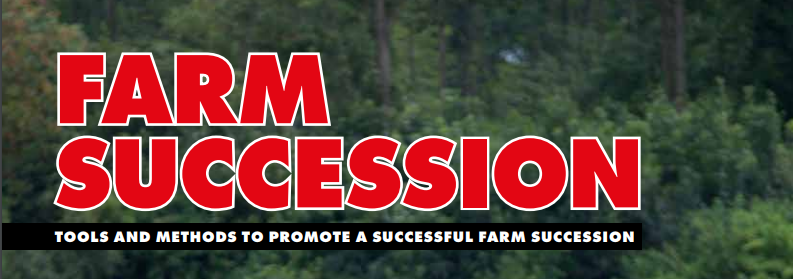Rumored Buzz on "Planning for Success: How to Set Realistic Goals in Farm Management"

Generating a Farm Plan That Assists Crop Rotation and Soil Health

Plant turning is a key technique in sustainable farming that markets ground health and wellness and lessens the risk of bug and illness. Through methodically growing various crops in a certain series, farmers can easily effectively take care of nutrients, command grass, and enhance soil productivity. Establishing a complete ranch plan that includes plant rotation concepts is essential for taking full advantage of turnouts, decreasing inputs, and guaranteeing long-term sustainability. In this short article, we will outline the key measures to generate a farm plan that sustains plant turning and dirt health.
1. Determine Your Dirt: The first step in developing a ranch planning is to assess your dirt's qualities and productivity levels. Carrying out regular dirt examinations can easily supply beneficial knowledge right into vitamins and mineral insufficiencies or inequalities, pH levels, all natural matter web content, and microbial task. Understanding your ground's problem are going to help you establish which crops are appropriate for certain areas of your ranch.
2. Split Your Farm right into Zones: To carry out an effective plant rotation program, it is crucial to divide your ranch right into different zones located on variables such as soil type, sun light exposure, drainage patterns, or territory. Through recognizing these distinctive zones within your ranch, you may customize crop selection depending on to each area's special attributes.
3. Decide on Appropriate Crop Groups: After separating your ranch right into zones, group plants in to different teams located on their vitamins and mineral demands or growth habits. This team makes it possible for you to spin crops within each zone systematically. For example, beans such as greens or grains fix nitrogen in the ground while grain crops like corn or wheat have high nutrient requirements.
4. Planning Crop Sequencing: Once you have picked necessary plant groups for each zone of your ranch, it's time to plan their sequencing throughout the growing season(s). A well-designed sequence makes certain that each crop follows one with different nutrition criteria or development habits to maximize information utilization while decreasing bug and illness normally.
5. Think about Cover Crops: Incorporating cover plants right into your plant rotation plan is important for improving soil health and wellness. Deal with crops, such as clover or rye, help stop disintegration, enhance dirt design, reduce weeds, and boost natural matter web content. Including cover plants in your rotation may improve nutrient bicycling and decrease the requirement for artificial plant foods or herbicides.
6. Manage Pest and Disease Pressure: Crop turning plays a important role in taking care of bug and diseases by damaging their life cycles. Through rotating crops along with different susceptibility amounts to details bug or health conditions, you may decrease their build-up in the soil. This practice lessens the reliance on chemical assistances while maintaining favorable pests and microbial communities.
7. Execute Conservation Practices: In add-on to plant rotation, applying preservation strategies like decreased cultivation or mulching can easily further improve soil wellness and water loyalty ability. Reduced cultivation decreases soil disruption, maintains natural issue information, and improves nutrition schedule. Keep Checking Back Here aids moderate ground temp, save moisture, control weeds, and market favorable microbial activity.
8. Display and Adjust: Frequent screen of your ranch's progress is necessary to analyze the performance of your crop rotation program and help make essential adjustments if required. Maintain documents of yields, pot stress degrees, pest outbreaks, or ailment occurrence to pinpoint patterns over opportunity. Assess the influence of your farm strategy on overall ground health and wellness by administering routine soil examinations.
In verdict, making a ranch strategy that sustains crop rotation and soil health is vital for lasting agriculture practices. Through examining your ground's features, breaking down your ranch right into zones located on its distinct qualities, choosing necessary crop groups for each zone, preparing crop sequencing strategically throughout the increasing season(s), integrating cover crops into rotations program , handling insect and ailment stress efficiently , applying preservation practices like minimized husbandry or mulching ,and regularly keeping track of and conforming as necessary - planters can optimize turnouts while ensuring long-term sustainability in their operations.
